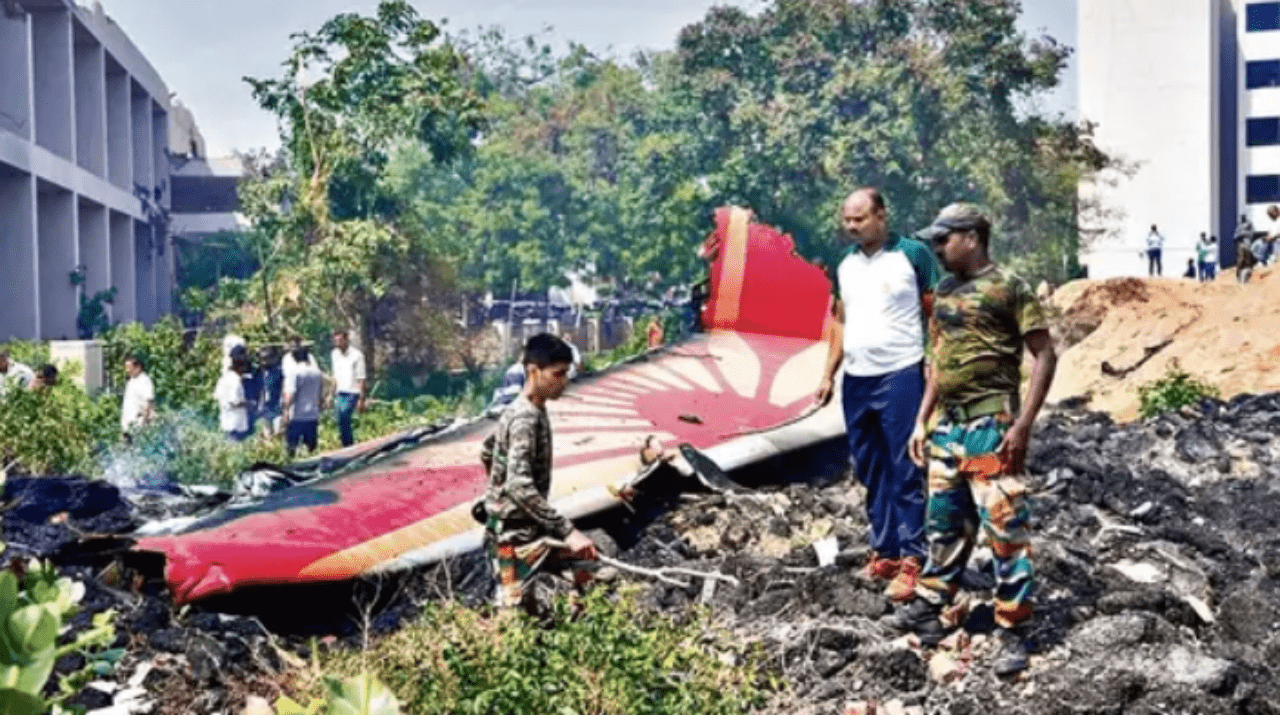The preliminary Air India plane crash report has sent shockwaves through the aviation industry, uncovering chilling details about the final moments of Flight AI171. On June 12, 2025, the Boeing 787-8 Dreamliner tragically crashed shortly after takeoff from Ahmedabad, resulting in the deaths of 260 people. The Aircraft Accident Investigation Bureau (AAIB) released its initial findings on July 11, raising more questions than answers.
What Happened to Air India Flight AI171?
Flight AI171 was a routine flight bound for London via Mumbai. It took off at approximately 08:08:39 UTC with 242 people on board, including 12 crew members. Just three seconds after takeoff, both engine fuel control switches were inexplicably moved from RUN to CUTOFF, leading to a complete loss of thrust in both engines.
The Air India plane crash report indicates that the two switches were moved manually — one after the other — just one second apart. This abrupt loss of engine power left the pilots with no time or altitude to recover, resulting in the crash of the aircraft into a densely populated area near the airport.
Voice Recorder Reveals Startling Exchange Between Pilots
According to the cockpit voice recorder, a disturbing exchange took place immediately after engine failure:
Captain: “Why did you cut off?”
First Officer: “I didn’t.”
This short but chilling conversation has sparked widespread speculation and concern. The Air India plane crash report confirms that the switch movements could not have occurred accidentally. Both switches are guarded and require intentional action to move them to the cutoff position.
Mechanical Fault or Human Error?
One of the central questions the investigation is now trying to answer is whether the switch movements were due to human error, deliberate action, or a technical malfunction. So far, the Air India plane crash report states:
- No evidence of bird strikes
- No signs of sabotage
- No adverse weather conditions
- No mechanical failure before the crash
Investigators are now closely examining the possibility of a manual error or deliberate act, as well as the history of the fuel control switch mechanism. Aviation experts have pointed to a 2018 FAA safety bulletin that highlighted concerns about the lock mechanisms on fuel switches of similar aircraft, though these were advisory in nature and not enforced.
Pilot Credentials and Crew Background
The report also confirms that both pilots were well-trained and medically fit:
- Captain Sumeet Sabharwal, 56 years old, had over 15,000 flight hours and served as a flight instructor.
- First Officer Clive Kunder, 32 years old, had more than 3,400 flight hours.
There were no signs of fatigue, intoxication, or personal distress prior to the flight. However, investigators are now looking deeper into their recent behavior and personal history as a precautionary measure.
Casualties and Survivors
Of the 242 people onboard, 241 tragically lost their lives, including all 12 crew members. The only survivor, Vishwashkumar Ramesh, was seated near the tail section and managed to escape with minor injuries.
The crash also claimed 19 lives on the ground, including students and staff at a nearby medical college, and left dozens injured.
Next Steps in the Investigation
The Air India plane crash report is just the beginning of a long and thorough investigation. The Aircraft Accident Investigation Bureau (AAIB) is working in collaboration with international agencies including:
- The U.S. National Transportation Safety Board (NTSB)
- The UK Air Accidents Investigation Branch (AAIB)
- Boeing (manufacturer)
- General Electric (engine manufacturer)
- The Federal Aviation Administration (FAA)
The final report is expected within 12 months, though investigators are under pressure to provide clarity sooner due to the scale of the tragedy.
Implications for Global Aviation
The early revelations from the Air India plane crash report have raised serious concerns across the aviation industry:
- Airlines operating Boeing 787s may face scrutiny over their cockpit safety procedures.
- The FAA may consider converting past advisories into mandatory directives regarding fuel switch lock inspections.
- Pilots may undergo refresher training related to takeoff procedures and engine switch safety.
Conclusion
The preliminary Air India plane crash report paints a grim picture of Flight AI171’s final moments. While the cause of the switch movement remains uncertain, the findings have cast a spotlight on cockpit procedures, aircraft design safety, and the importance of rigorous maintenance checks.
As the world mourns the victims of this devastating crash, the aviation industry must now act swiftly to ensure that such a tragedy never happens again.






